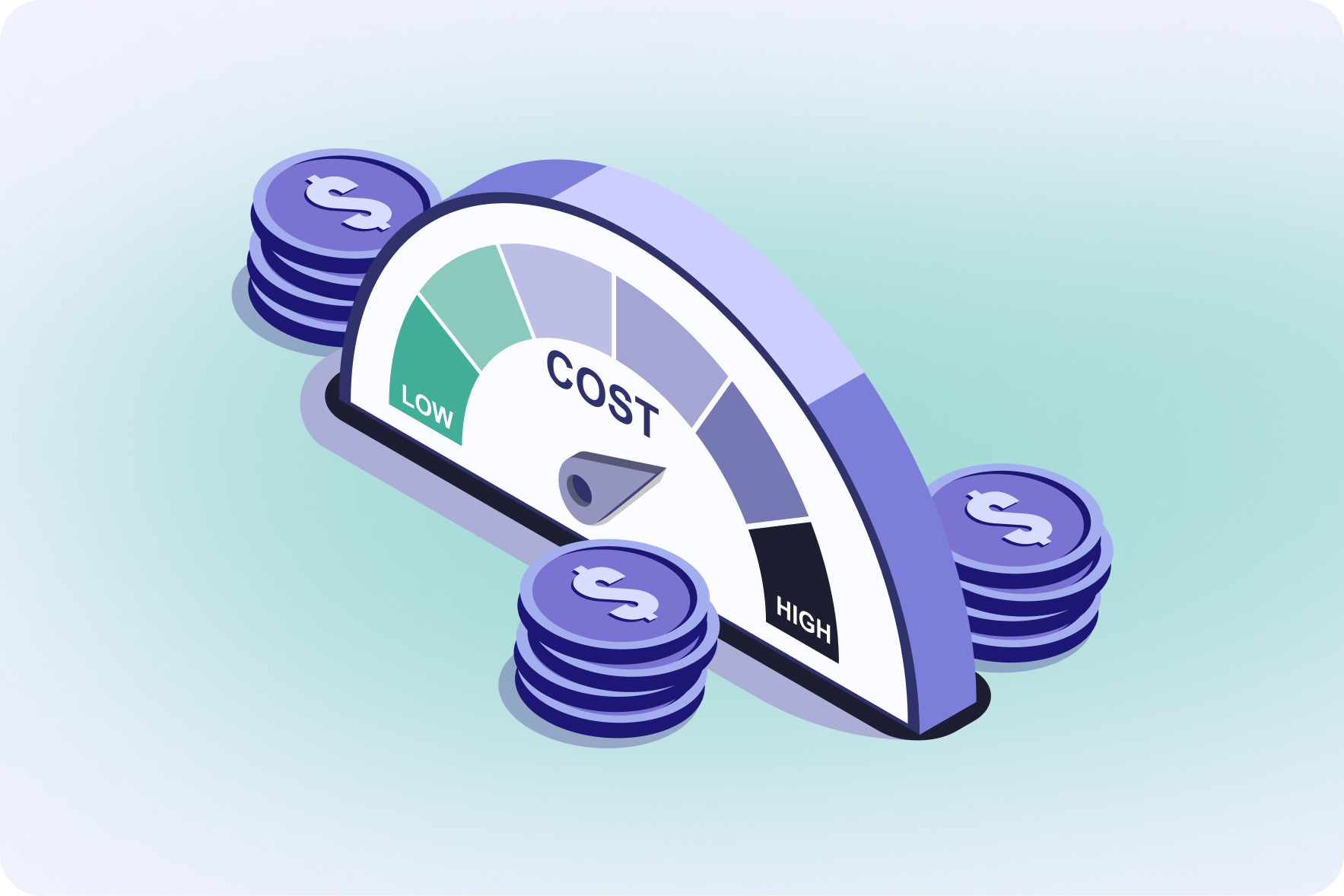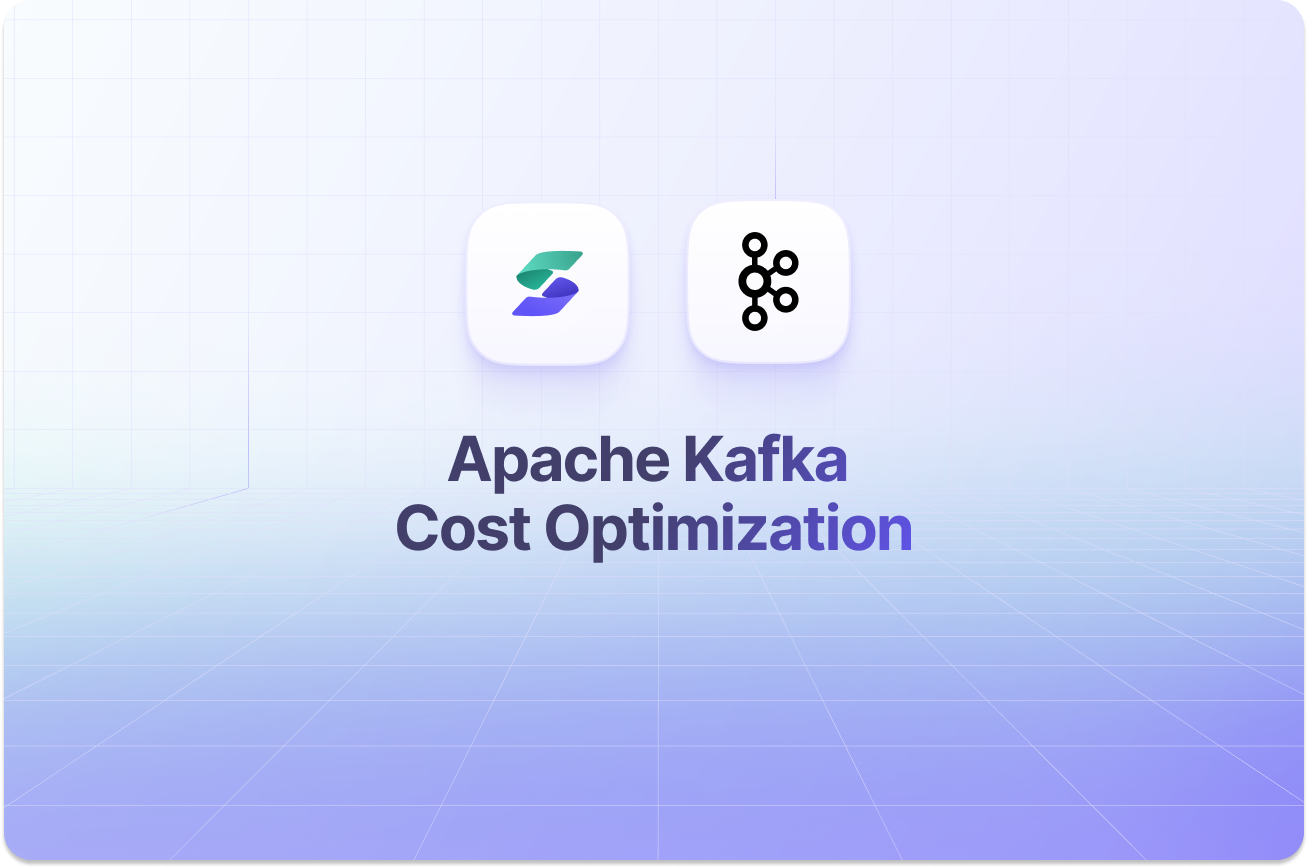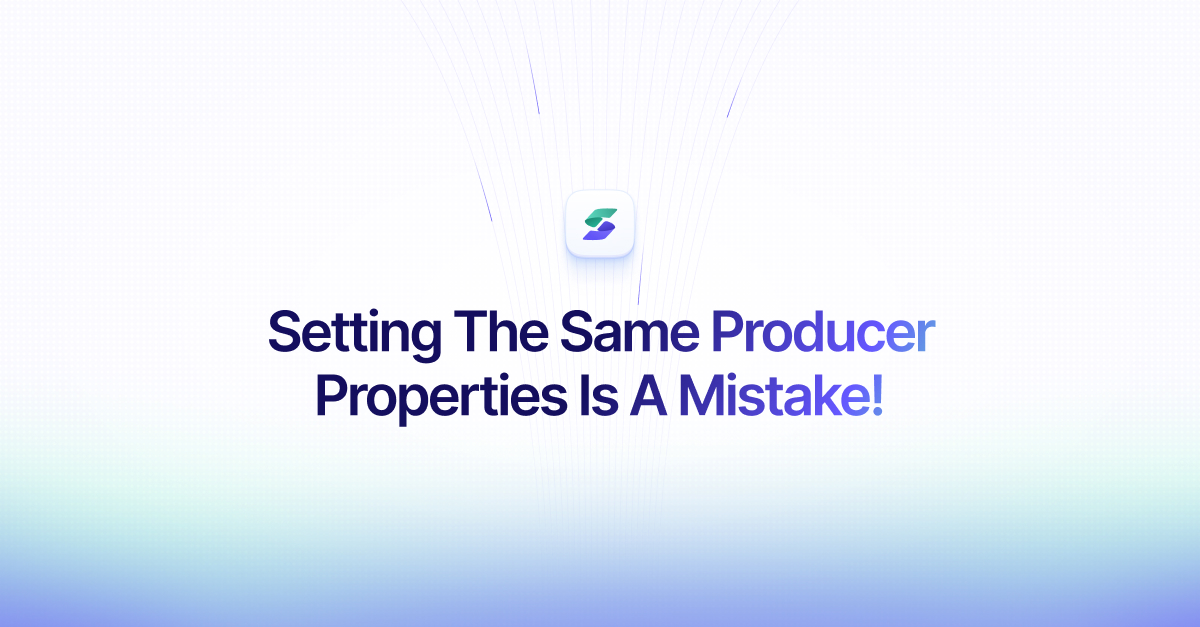The Complete Guide to Kafka Cost Optimization Without Burning Engineering Time
Apache Kafka can become a silent cost driver if left unchecked.
Apache Kafka is a powerful tool for managing high-throughput, real-time data—but without the right approach, it can quietly drive up your cloud expenses. As your data volumes grow, so do the infrastructure and operational costs behind the scenes.
This guide breaks down practical, proven ways to optimize Kafka costs, avoid overprovisioning, and build a more cost-effective Kafka architecture.
Why Kafka Costs Can Spiral Out of Control
Apache Kafka has become the backbone of real-time data pipelines in many fast-growing SaaS companies. It's powerful, scalable, and flexible — but it can also be a silent cost driver if left unmanaged.
For engineering teams at companies with $40M–$100M ARR and lean, data-heavy structures, Kafka cost optimization often gets sidelined. The issue isn't awareness — it’s time. Optimizing Kafka costs demands deep technical knowledge, a clear view of long-term usage patterns, and safe ways to experiment with configuration changes.
For most engineering teams, that’s a tall order. Between shipping features, scaling infrastructure, and putting out daily fires, there’s little room left for tuning Kafka’s internals. But the price of inaction adds up — sometimes into millions.
So, how can engineering teams reduce costs Kafka without becoming experts in Kafka internals or adding new layers of complexity? Let's dive into the common cost challenges and explore practical strategies for making Kafka leaner — without compromising reliability.
Why Kafka Cost Optimization Is So Complex
.jpg)
Kafka cost optimization isn’t just about shrinking broker counts or scaling down partitions. It's a multi-dimensional challenge. To build a truly cost-effective Kafka architecture, you need visibility into how the system behaves at scale and where inefficiencies hide.
Here are some of the key factors that impact your costs:
- Understanding traffic patterns across producers and consumers
Knowing which applications are generating and consuming the most data helps identify unnecessary traffic or inefficient usage that inflates your Kafka bill. - Tracking data retention policies over time
Storing data longer than needed dramatically increases storage and replication costs. Retention policies must align with actual business or compliance needs in reducing Kafka costs. - Forecasting throughput and capacity under varying workloads
Anticipating spikes and trends allows you to avoid overprovisioning “just in case,” which is a common reason companies overspend on Kafka infrastructure. - Ensuring fault tolerance while experimenting with cluster settings
Kafka is often mission-critical, so changes must be safe. But avoiding all changes out of fear leads to bloated setups. Safe testing unlocks smarter Kafka cost saving opportunities. - Tuning configurations like batch size, compression, replication, and more
These technical settings directly affect resource consumption. Inefficient tuning wastes compute and storage, driving up the total Kafka infrastructure cost unnecessarily.
Why It’s So Hard to Get Right
Implementing Kafka cost optimization strategies sounds simple—but in practice, it’s complicated by several obstacles:
- The signals are scattered across logs, dashboards, and usage metrics
There’s no single place to view the full cost picture, making it easy to miss inefficiencies. - Many decisions require historical context and future planning
Without past usage data or growth forecasts, it’s hard to optimize confidently. - Changing the wrong setting can disrupt production data flows
Mistakes can lead to outages, so many companies avoid touching Kafka configurations altogether. - Companies often lack the internal tooling or time to run cost-focused experiments
Without automation or expert systems, optimization requires time, expertise, and risk tolerance—resources many teams can't spare.
As a result, Kafka environments tend to grow conservatively—“just to be safe”—which leads to significant overspending. Addressing this requires a shift in mindset from brute-force scaling to intelligent, continuous cost optimization Kafka efforts.
The Kafka Cost Optimization Mindset: Focus on Efficiency, Not Just Scale

For mid-stage SaaS companies handling large volumes of data, the answer isn’t to scale down aggressively — it’s to scale smart. Here’s how your team can approach cost optimization Kafka without diving into low-level tuning on day one:
- Profile your Kafka workloads
Start by identifying high-volume topics, idle partitions, and underutilized brokers. Look for:
- Topics with long retention times but low access rates
These are often forgotten data streams that still consume expensive storage. Shortening their retention or deleting them entirely can reduce Kafka storage costs with minimal business impact. - Consumer groups lagging behind consistently
Lagging consumers may indicate slow processing or abandoned applications still subscribed to topics. They increase the load on your system without delivering value. - Producers pushing large volumes with inefficient batch sizes
Small batches create unnecessary overhead. Optimizing batch size improves throughput and lowers resource consumption, helping you optimize Kafka costs more efficiently.
- Audit your retention and replication settings
Often, data is kept longer than necessary, or replicated more than needed for the business case. Review:
- Retention.ms settings — are you storing data “just in case”?
Default settings are often too generous. If old data isn’t being used, shorten the retention period to save on disk space and reduce replication load. - Replication factors — do all topics really need RF=3?
While high replication adds durability, it triples your storage usage. Reducing the replication factor for non-critical topics can significantly cut Kafka cost. - Topic compaction — are you using it where it makes sense?
Compaction helps keep only the latest version of a key, which is useful for reference data. When applied strategically, it reduces data volume and supports Kafka cost reduction without loss of value.
This is a simple way to reduce the costs of running Kafka without affecting performance.
- Revisit your autoscaling strategy
Autoscaling Kafka components based on CPU or memory usage doesn’t always reflect real data throughput. Consider tuning autoscaling policies to align with message volume, not just infrastructure metrics.
This technique helps reduce Kafka bill and improves cluster elasticity.
- Use safe sandboxing for testing config changes
Testing new Kafka configurations in production can feel risky. That’s why teams often avoid it altogether. A safer approach is to experiment in isolated environments, gradually roll out changes, and monitor the impact.
These practices support Kafka cost saving without introducing downtime.
- Automate what can be automated
Kafka optimization isn’t a one-time event — it’s a continuous process. Automation can help surface inefficiencies, test configurations safely, and ensure Kafka cost savings persist over time.
How Superstream Can Help with Optimizing Kafka Costs

If you’re looking to reduce Kafka costs without manual tuning, trial-and-error, or adding internal complexity, Superstream offers a fast and reliable solution. It automatically analyzes your Kafka usage, detects inefficiencies, and safely applies changes — all without disrupting performance.
Instead of relying on scripts or internal expertise, Superstream continuously improves your Kafka cost efficiency by up to 90%, helping you reduce spend while keeping your systems lean, stable, and scalable.
Final Thoughts: Make Kafka Lean Without the Burn
Apache Kafka is a powerful engine — but left unmonitored, it can drain your budget silently. The good news? You don’t need deep Kafka expertise or a full-time DevOps team to get it under control.
By shifting your mindset from reactive scaling to proactive Kafka cost optimization, and by applying practical strategies like retention audits, autoscaling tuning, and automation, you can reduce costs of running Kafka without compromising reliability.
And for teams looking to accelerate impact, Superstream offers a way to optimize Kafka costs, implement Kafka cost optimization techniques, all without burning engineering time – so you save more while focusing on growing your business.



.jpg)

.webp)